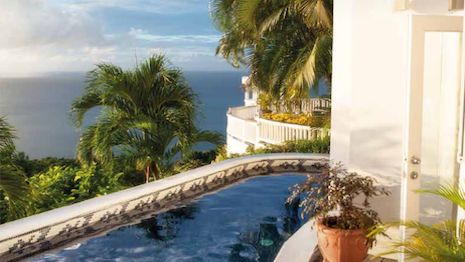The decline in the euro, used by Caribbean island St. Bart’s, has allowed the affluent vacation destination to flourish as a second-home location due to favorable exchange rates.
A new report from Knight Frank shows that in October 2016, affluent U.S. consumers who purchased a second home in St. Bart’s saw a 21 percent discount compared to those in 2013. The Residential Research report showed that the discounts are due to the dropping euro and has increased demand from consumers in Europe as well as the U.S.
“The Caribbean property market is gaining traction having been hit hard by the global financial crisis,” said Kate Everett-Allen, partner of international residential research at Knight Frank. “The stage and speed of the recovery varies from island to island, for some it is ‘business as usual’ for others confidence is returning slowly.
“St. Barts and Mustique have recorded steady sale rates in recent years, popular with buyers seeking a secure and discreet lifestyle,” she said.
Caribbean tourism
St. Bart’s modern architecture has helped the island usher in favorability from the upper class. For the past three years, hotels have been frequently changing hands due to the influx in tourism.
Exchange rates from the U.S. dollar to St. Bart’s euro saw a 20.5 percent gain for U.S. consumers. However, U.S. owners saw a 20.5 percent loss.
The British Virgin Islands is also seeing an optimistic turn, with an increase in the super yacht presence at its yacht club and a major renovation at Little Dix Bay Hotel.
Mustique has seen stronger property sales over the last 18 months, likely due to its ability to uphold privacy, exclusivity and security. The island sees popularity from consumers all over the world.
The Caribbean in general in 2015 saw a 7 percent rise in tourists. However, the value of second homes in the area dropped by 1 percent in the same year.
Property in the Bahamas fell 30 to 40 percent in peak-to-trough terms since 2008. However by 2015, the annual decline rate slowed to less than 5 percent.
Exchange rates
Real estate advisors believe that foreign buyers purchased at least a quarter of Canadian luxury properties, according to a report from Royal LePage.
When asked about changes in the market, two-thirds of advisors say foreign buyer activity has increased, with 24 percent saying foreign buyers account for at least 25 percent of properties. Canada’s culture, laws and currency suggest that the trend will continue throughout the year (see more).
In 2015, when the Swiss National Bank lifted its three-year cap on the value of the Swiss franc against the euro, Switzerland’s luxury real estate and tourism markets saw a hit as affluents flocked instead to the French Alps the winter season.
Prior to Jan. 15, 2015 the Swiss franc was capped so that the country’s currency would follow the patterns of the euro, but with recent drops in the value of the euro, the Swiss National Bank removed the ceiling and saw a thirty percent increase in the value of the franc. The unexpected move by SNB impacted the nation’s tourist season as winter sport enthusiasts from Europe, the United Kingdom and the United States changed their ski trip destinations to avoid the suddenly high prices at the Swiss Alps (see more).
“The expected U.S. rate rise in early 2017 will result in a stronger U.S. dollar, potentially providing an advantage for U.S. buyers looking in euro-denominated markets such as St. Barts,” Ms. Everett-Allen said.
from Travel and hospitality – Luxury Daily https://www.luxurydaily.com/st-barts-flourishes-as-euro-declines/
via Your #1 Source to Finding Luxury & Designer Goods, Handbags & Clothes at or Below Wholesale: Click Here.



No comments:
Post a Comment